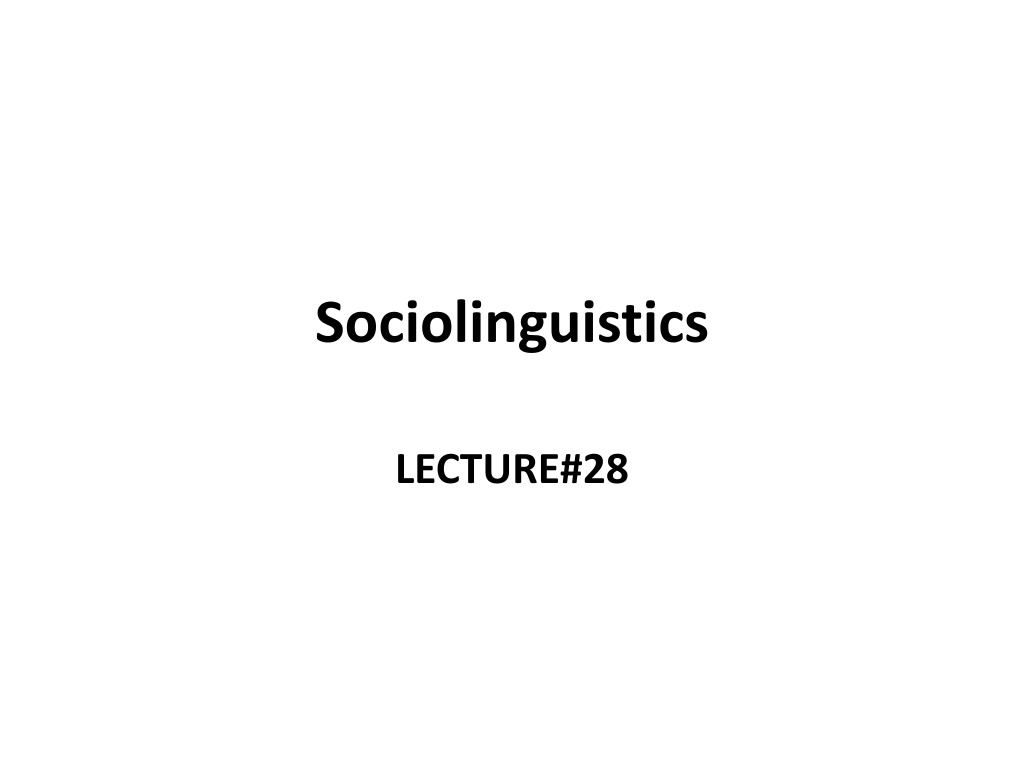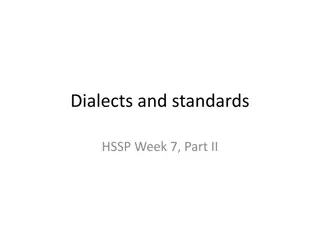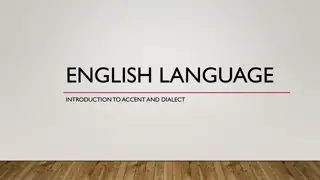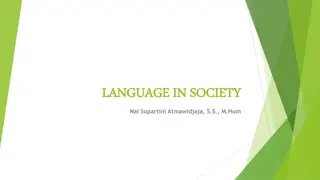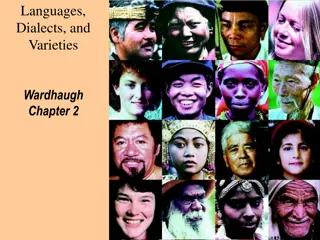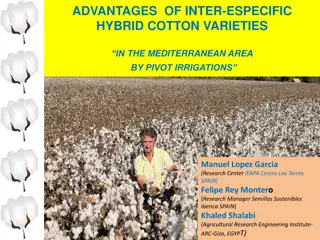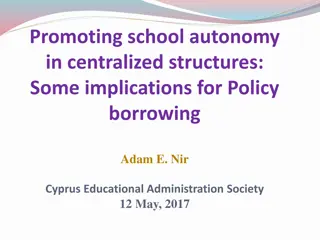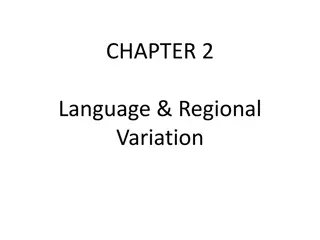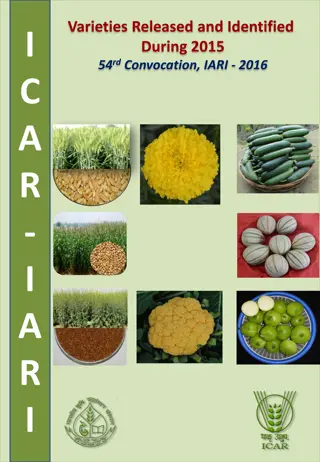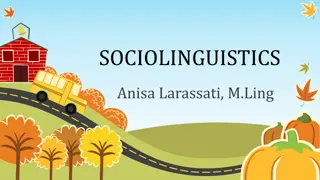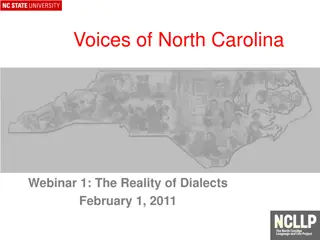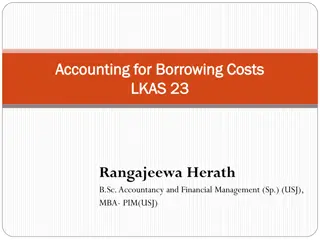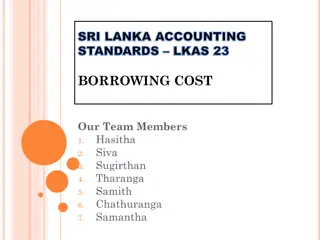Exploring Sociolinguistics: Dialects, Varieties, and Language Borrowing
Sociolinguistics delves into the study of language variations within different social contexts. This includes examining concepts such as regional dialects, language borrowing, and the development of distinct linguistic varieties. From analyzing Basic English to exploring objections to Anglicisms and concerns over Chinese language development, this field uncovers the intricate relationship between language, culture, and society.
Download Presentation

Please find below an Image/Link to download the presentation.
The content on the website is provided AS IS for your information and personal use only. It may not be sold, licensed, or shared on other websites without obtaining consent from the author. Download presentation by click this link. If you encounter any issues during the download, it is possible that the publisher has removed the file from their server.
E N D
Presentation Transcript
Sociolinguistics LECTURE#28
Sociolinguistics 14. Find out what you can about Basic English. In what ways is it a reduced form of Standard English? Do the kinds of reductions introduced into Basic English make it simpler to learn and use? (You will have to define simpler. ) 15. From time to time certain users of languages such as French and German have objected to borrowings, in particular borrowings from English. What Anglicisms have been objected to? What kinds of native resources have been suggested as suitable alternative sources of exploitation in order to develop and/or purify the language? What motivates the objections?
Sociolinguistics 16. Some Chinese scholars are concerned with developing the vocabulary of Chinese to make it usable for every kind of scientific and technical endeavor. They reject the idea that such vocabulary should be borrowed from other languages. What do you think they hope to gain by doing this? Do they lose anything if they are successful?
Sociolinguistics 17. A language is a dialect with an army and a navy is a well-known observation.(Today we would add an airforce !) True? And, if so, what are the consequences? 18. In the UNESCO Courier of April, 2000, a writer makes the following observation: Languages usually have a relatively short life span as well as a very high death rate. Only a few, including Basque, Egyptian, Chinese, Greek, Hebrew, Latin, Persian, Sanskrit, and Tamil have lasted more than 2000 years. How is this statement at best a half-truth? 19. Are the Australian, New Zealand, Canadian, and other national varieties of English new dialects of English, or autonomous languages, or possibly even both? (See Hickey, 2004, Gordon et al., 2004, and Trudgill, 2004.)
Sociolinguistics Regional Dialects Regional variation in the way a language is spoken is likely to provide one of the easiest ways of observing variety in language. As you travel throughout a wide geographical area in which a language is spoken, and particularly if that language has been spoken in that area for many hundreds of years, you are almost certain to notice differences in pronunciation, in the choices and forms, Dialects, and Varieties of words, and in syntax.
Sociolinguistics There may even be very distinctive local colorings in the language which you notice as you move from one location to another. Such distinctive varieties are usually called regional dialects of the language. As we saw earlier, the term dialect is sometimes used only if there is a strong tradition of writing in the local variety. Old English and to a lesser extent Middle English had dialects in this sense. In the absence of such a tradition of writing the term patois may be used to describe the variety. However, many linguist swriting in English tend to use dialect to describe both situations and rarely, if at all, use patois as a scientific term. You are likely to encounter it only as a kind of anachronism, as in its use by Jamaicans, who often refer to the variety of English spoken on the island as a patois.
Sociolinguistics The dialect patois distinction actually seems to make more sense in some situations, e.g., France, than in others. In medieval France, a number of languages flourished and several were associated with strong literary traditions. However, as the language of Paris asserted itself from the fourteenth century on, these traditions withered. Parisian French spread throughout France, and, even though that spread is still not yet complete (as visits to such parts of France as Brittany,
Provence, Corsica, and Alsace will confirm), it drastically reduced the importance of the local varieties: they continue to exist largely in spoken forms only; they are disfavored socially and politically; they are merely patois to those who extol the virtues of Standard French. However, even as these varieties have faded, there have been countervailing moves to revive them as many younger residents of the areas in which they are spoken see them as strong indicators of identities they wish to preserve.
Sociolinguistics There are some further interesting differences in the use of the terms dialect and patois (Petyt, 1980, pp. 24 5). Patois is usually used to describe only rural forms of speech; we may talk about an urban dialect, but to talk about an urban patois seems strange. Patois also seems to refer only to the speech of the lower strata in society; again, we may talk about a middle-class dialect but not, apparently, about a middle-class patois. Finally, a dialect usually has a wider geographical distribution than a patois, so that, whereas regional dialect and village patois seem unobjectionable, the same cannot be said for regional patois and village dialect. However, as I indicated above, many Jamaicans refer to the popular spoken variety of Jamaican English as a patois rather than as a dialect. So again the distinction is in no way an absolute one.
Sociolinguistics This use of the term dialect to differentiate among regional varieties of specific languages is perhaps more readily applicable to contemporary conditions in Europe and some other developed countries than it would have been in medieval or Renaissance Europe or today in certain other parts of the world, where it was (and still is) possible to travel long distances and, by making only small changes in speech from location to location, continue to communicate with the inhabitants. (You might have to travel somewhat slowly, however, because of the necessary learning that would be involved!)
Sociolinguistics It has been said that at one time a person could travel from the south of Italy to the north of France in this manner. It is quite clear that such a person began the journey speaking one language and ended it speaking something entirely different; however, there was no one point at which the changeover occurred, nor is there actually any way of determining how many intermediate dialect areas that person passed through. For an intriguing empirical test of this idea, one using recent phonetic data from a continuum of Saxon and Franconian dialects in the Netherlands, see Heeringa and Nerbonne (2001). They conclude that the traveler perceives phonological distance indirectly and that there are unsharp borders between dialect areas .
Sociolinguistics Such a situation is often referred to as a dialect continuum. What you have is a continuum of dialects sequentially arranged over space: A, B, C, D, and so on. Over large distances the dialects at each end of the continuum may well be mutually unintelligible, and also some of the intermediate dialects may be unintelligible with one or both ends, or even with certain other intermediate ones. In such a distribution, which dialects can be classified together under one language, and how many such languages are there? As I have suggested, such questions are possibly a little easier to answer today in certain places than they once were.
Sociolinguistics The hardening of political boundaries in the modern world as a result of the growth of states, particularly nation-states rather than multinational or multi-ethnic states, has led to the hardening of language boundaries. Although residents of territories on both sides of the Dutch German border(within the West Germanic continuum) or the French Italian border (within the West Romance continuum) have many similarities in speech even today, they will almost certainly tell you that they speak dialects of Dutch or German in the one case and French or Italian in the other. Various pressures political, social cultural, and educational serve to harden current state boundaries and to make the linguistic differences among states more, not less, pronounced. Dialects continue therefore to disappear as national languages arise. They are subject to two kinds of pressure: one from within, to conform to a national standard, and one from without, to become different from standards elsewhere.
Sociolinguistics When a language is recognized as being spoken in different varieties, the issue becomes one of deciding how many varieties and how to classify each variety. Dialect geography is the term used to describe attempts made to map the distributions of various linguistic features so as to show their geographical provenance. For example, in seeking to determine features of the dialects of English and to show their distributions, dialect geographers try to find answers to questions such as the following.
Sociolinguistics Is this an r-pronouncing area of English, as in words like car and cart, or is it not? What past tense form of drink do speakers prefer? What names do people give to particular objects in the environment, e.g., elevator or lift, petrol or gas, carousel or roundabout? Sometimes maps are drawn to show actual boundaries around such features, boundaries called isoglosses, so as to distinguish an area in which a certain feature is found from areas in which it is absent. When several such isoglosses coincide, the result is sometimes called a dialect boundary. Then we may be tempted to say that speakers on one side of that boundary speak one dialect and speakers on the other side speak a different dialect.
Sociolinguistics As we will see when we return once again to this topic, there are many difficulties with this kind of work: finding the kinds of items that appear to distinguish one dialect from another; collecting data; drawing conclusions from the data we collect; presenting the findings; and so on. It is easy to see, however, how such a methodology could be used to distinguish British, American, Australian, and other varieties of English from one another as various dialects of one language.
Sociolinguistics It could also be used to distinguish Cockney English from Texas English. But how could you use it to distinguish among the multifarious varieties of English found in cities like New York and London? Or even among the varieties we observe to exist in smaller, less complex cities and towns in which various people who have always resided there are acknowledged to speak differently from one another?
Sociolinguistics Finally, the term dialect, particularly when it is used in reference to regional variation, should not be confused with the term accent. Standard English, for example, is spoken in a variety of accents, often with clear regional and social associations: there are accents associated with North America, Singapore, India, Liverpool (Scouse), Tyneside (Geordie), Boston, New York, and so on. However, many people who live in such places show a remarkable uniformity to one another in their grammar and vocabulary because they speak Standard English and the differences are merely those of accent, i.e., how they pronounce what they say.
Sociolinguistics One English accent has achieved a certain eminence, the accent known as Received Pronunciation (or RP), the accent of perhaps as few as 3 percent of those who live in England. (The received in Received Pronunciation is a little bit of old-fashioned snobbery: it means the accent allows one to be received into the better parts of society!) This accent is of fairly recent origin (see Mugglestone,1995), becoming established as prestigious only in the late nineteenth century and not even given its current label until the 1920s.
Sociolinguistics In the United Kingdom at least, it is usually associated with a higher social or educational background, with the BBC and the professions, and [is] most commonly taught to students learning English as a foreign language (Wakelin, 1977). For many such students it is the only accent they are prepared to learn, and a teacher who does not use it may have difficulty in finding a position as a teacher of English in certain non-English- speaking countries in which a British accent is preferred over a North American one. In fact, those who use this accent are often regarded as speaking unaccented English because it lacks a regional association within England. Other names for this accent are the Queen s English, Oxford English, and BBC English.
Sociolinguistics However, there is no unanimous agreement that the Queen does in fact use RP, a wide variety of accents can be found among the staff and students at Oxford University, and regional accents are now widely used in the various BBC services. As Bauer (1994) also shows, RP continues to change.
Sociolinguistics One of its most recent manifestations has been labeled Estuary English (Rosewarne, 1994) sometimes also called Cockneyfied RP development of RP along the lower reaches of the Thames reflecting a power shift in London toward the world of finance, banking, and commerce and away from that of inherited position, the Church, law, and traditional bureaucracies.
Sociolinguistics Trudgill (1995, p. 7) has pointed out what he considers to be the most interesting characteristics of RP: the relatively very small numbers of speakers who use it do not identify themselves as coming from any particular geographical region ; RP is largely confined to England and there it is a non-localized accent ; and it is . . . Not necessary to speak RP to speak Standard English because Standard English can be spoken with any regional accent, and in the vast majority of cases normallyis.
Sociolinguistics It is also interesting to observe that the 1997 English Pronouncing Dictionary published by Cambridge University Press abandoned the label RP in favor of BBC English even though this latter term is not unproblematic as the BBC itself has enlarged the accent pool from which it draws its newsreaders. The development of Estuary English is one part of a general leveling of accents within the British Isles.
Sociolinguistics The changes are well documented; see, for example, Foulkes and Docherty (1999), wh review a variety of factors involved in the changes that are occurring in cities. One feature of Estuary English, the use ofa glottal stop for t (Fabricus, 2002), is also not unique to that variety but is spreading widely, for example to Newcastle, Cardiff, and Glasgow, and even as far north as rural Aberdeen shire in northeast Scotland (Marshall, 2003).
Sociolinguistics Watt (2000, 2002) used the vowels in face and goat to show that Geordie, the Newcastle accent, levels toward a regional accent norm rather than toward a national one, almost certainly revealing a preference for establishing a regional identity rather than either a very limited local identity or a wider national one.
Sociolinguistics The most generalized accent in North America is sometimes referred to as General American or, more recently, as network English, the accent associated with announcers on the major television networks. Other languages often have no equivalent to RP: for example, German is spoken in a variety of accents, none of which is deemed inherently any better than any other. Educated regional varieties are preferred rather than some exclusive upper-class accent that has no clear relationship to personal achievement.
Sociolinguistics As a final observation I must reiterate that it is impossible to speak English without an accent. There is no such thing as an unaccented English. RP is an accent, a social one rather than a regional one. However, we must note that there are different evaluations of the different accents, evaluations arising from social factors not linguistic ones. Matsuda (1991, p. 1361) says it is really an issue of power: When . . . parties are in a relationship of domination and subordination we tend to say that the dominant is normal, and the subordinate is different from normal. And so it is with accent. . . . People in power are perceived as speaking normal, unaccented English. Any speech that is different from that constructed norm is called an accent. In the pages that follow we will return constantly to linguistic issues having to do with power.
Sociolinguistics Discussion 1. What regional differences are you aware of in the pronunciation of each of the following words: butter, farm, bird, oil, bag, cot, caught, which, witch, Cuba, spear, bath, with, happy, house, Mary, merry, marry? 2. What past tense or past participle forms have you heard for each of the following verbs: bring, drink, sink, sing, get, lie, lay, dive? 3. What are some other variants you are aware of for each of the following sentences: I haven t any money, I ain t done it yet, He be farmer, Give it me, It was me what told her ? Who uses each variant? On what occasions? 4. What other names are you aware of for objects sometimes referred to as seesaws, cobwebs, sidewalks, streetcars, thumbtacks, soft drinks, gym shoes, elevators? Again, who uses each variant?
Sociolinguistics 5. What do you yourself call each of the following: cottage cheese, highway, first grade, doughnuts, griddle cakes, peanuts, spring onions, baby carriage, chest of drawers, faucet, frying pan, paper bag, porch, sitting room, sofa, earthworm? 6. Each of the following is found in some variety of English. Each is comprehensible. Which do you yourself use? Which do you not use? Explain how those utterances you do not use differ from those you do use.
Sociolinguistics a. I haven t spoken to him. b. I ve not spoken to him. c. Is John at home? d. Is John home? e. Give me it. f. Give it me. g. Give us it. h. I wish you would have said so. i. I wish you d said so. j. Don t be troubling yourself. k. Coming home tomorrow he is.
Sociolinguistics 7. How might you employ a selection of items from the above questions (or similar items) to compile a checklist that could be used to determine the geographical (and possibly social) origins of a speaker of English? 8. A local accent may be either positively or negatively valued. How do you value each of the following: a Yorkshire accent; a Texas accent; the accents of the Queen of England, the Prime Minister of the United Kingdom, and the President of the United States? Think of some others. Why do you react the way you do? Is it a question of being able to identify with the speaker or not; of social class; :
Sociolinguistics of education; or stereotyping; or what? How appropriate would each of the following be: RP in a Tyneside working-class pub; network English at a Black Power rally in Harlem; and Parisian French at a hockey game at the Montreal Forum? 9. A. S. C. Ross, in Noblesse Oblige (Mitford, 1956), a book which discusses somewhat lightheartedly, but not un-seriously, differences between U (upper-class) and non-U (not upper-class) speech in the United Kingdom, observes
Sociolinguistics Social Dialects The term dialect can also be used to describe differences in speech associated with various social groups or classes. There are social dialects as well as regional ones. An immediate problem is that of defining social group or social class ,giving proper weight to the various factors that can be used to determine social position, e.g., occupation, place of residence, education, new versus old money, income, racial or ethnic origin, cultural background, caste, religion, and so on.
Sociolinguistics Such factors as these do appear to be related fairly directly to how people speak. There is a British public-school dialect, and there is an African American Vernacular English dialect found in cities such as New York, Detroit, and Buffalo. Many people also have stereotypical notions of how other people speak, and, as we will see in particular, there is considerable evidence from work of investigators such as Labov and Trudgill that social dialects can indeed be described systematically.
Sociolinguistics Whereas regional dialects are geographically based, social dialects originate among social groups and are related to a variety of factors, the principal ones apparently being social class, religion, and ethnicity. In India, for example, caste, one of the clearest of all social differentiators, quite often determines which variety of a language a speaker uses. In a city like Baghdad the Christian, Jewish, and Muslim inhabitants speak different varieties of Arabic.
Sociolinguistics In this case the first two groups use their variety solely within the group but the Muslim variety serves as a lingua franca, or common language, among the groups. Consequently, Christians and Jews who deal with Muslims must use two varieties: their own at home and the Muslim variety for trade and in all inter-group relationships. Ethnic variation can be seen in the United States, where one variety of English has become so identified with an ethnic group that it is often referred to as African American Vernacular English (AAVE). Labov s work in New York City shows that there are other ethnic differences too: speakers of Jewish and Italian ethnicity differentiate themselves from speakers of either the standard variety or AAVE . On occasion they actually show hyper corrective tendencies in that they tend to overdo certain imitative behaviors: Italians are inclined to be in the vanguard of pronouncing words like bad and bag with a vowel resembling that of beard and Jews in the vanguard of pronouncing words like dog with a vowel something like that of book.
Sociolinguistics A possible motivation for such behavior is a desire to move away from the Italian and Yiddish vowels that speakers could so easily use in these words but which would be clear ethnic markers; however, the movement prompted by such avoidance behavior goes beyond the prevailing local norm and becomes an ethnic characteristic that serves as an indicator of identity and solidarity. Studies in social dialectology, the term used to refer to this branch of linguistic study, confront many difficult issues, particularly when investigators venture into cities.
Sociolinguistics Cities are much more difficult to characterize linguistically than are rural hamlets; variation in language and patterns of change are much more obvious in cities, e.g., in family structures, employment, and opportunities for social advancement or decline. Migration, both in and out of cities, is also usually a potent linguistic factor.
Sociolinguistics Cities also spread their influence far beyond their limits and their importance should never be underestimated in considering such matters as the standardization and diffusion of languages. In later chapters we will look closely at the importance of language variation in cities and see how important such variation is in trying to understand how and why change occurs in languages. In this way we may also come to appreciate why some sociolinguists regard such variation as being at the heart of work in sociolinguistics.
Sociolinguistics Discussion 1. Gumperz (1968) maintains that separate languages maintain themselves most readily in closed tribal systems in which kinship dominates all activities; on the other hand, distinctive varieties arise in highly stratified societies. He points out that, when social change causes the breakdown of traditional social structures and the formation of new ties, linguistic barriers between varieties also break down. Can you think of any examples which either confirm or disconfirm this claim? 2. If some social dialects may properly be labeled nonstandard, Labov raises a very important issue in connection with finding speakers who can supply reliable data concerning such varieties. He says:
Sociolinguistics We have not encountered any non-standard speakers who gained good control of a standard language, and still retained control of the non-standard vernacular. Dialect differences depend upon low-level rules which appear as minor adjustments and extensions of contextual conditions, etc. It appears that such conditions inevitably interact, and, although the speaker may indeed appear to be speaking the vernacular, close examination of his speech shows that his grammar has been heavily influenced by the standard. He may succeed in convincing his listeners that he is speaking the vernacular, but this impression seems to depend upon a number of unsystematic and heavily marked signals. If Labov s observation is correct, what must we do to gain access to any information we seek about the non-standard vernacular ? What difficulties do you foresee?
Sociolinguistics 3. How are language norms established and perpetuated in rather isolated rural communities, e.g., a small village in the west of England, or in northern Vermont, or in the interior of British Columbia? How different do you think the situation is in London, New York, or Vancouver? Are there any similarities at all? How are language norms established overall in England, the United States, and Canada?
Sociolinguistics Styles, Registers, and Beliefs The study of dialects is further complicated by the fact that speakers can adopt different styles of speaking. You can speak very formally or very informally, your choice being governed by circumstances. Ceremonial occasions almost invariably require very formal speech, public lectures somewhat less formal, casual conversation quite informal, and conversations between intimates on matters of little importance may be extremely informal and casual. We may try to relate the level of formality chosen to a variety of factors: the kind of occasion; the various social, age, and other differences that exist between the participants; the particular task that is involved, e.g., writing or speaking;
Sociolinguistics the emotional involvement of one or more of the participants; and so on. We appreciate that such distinctions exist when we recognize the stylistic appropriateness of What do you intend to do, your majesty? and the inappropriateness of Waddya intend doin , Rex? While it may be difficult to characterize discrete levels of formality, it is nevertheless possible to show that native speakers of all languages control a range of stylistic varieties. It is also quite possible to predict with considerable confidence the stylistic features that a native speaker will tend to employ on certain occasions.
Sociolinguistics Register is another complicating factor in any study of language varieties. Registers are sets of language items associated with discrete occupational or social groups. Surgeons, airline pilots, bank managers, sales clerks, jazz fans, and pimps employ different registers. As Ferguson says, People participating in recurrent communication situations tend to develop similar vocabularies, similar features of intonation, and characteristic bits of syntax and phonology that they use in these situations.
Sociolinguistics This kind of variety is a register. Ferguson adds that its special terms for recurrent objects and events, and formulaic sequences or routines, seem to facilitate speedy communication; other features apparently serve to mark the register, establish feelings of rapport, and serve other purposes similar to the accommodation that influences dialect formation.
Sociolinguistics There is no mistaking the strong tendency for individuals and co communicators to develop register variation along many dimensions. Of course, one person may control a variety of registers: you can be a stockbroker and an archeologist, or a mountain climber and an economist. Each register helps you to express your identity at a specific time or place, i.e., how you seek to present yourself to others. Dialect, style, and register differences are largely independent: you can talk casually about mountain climbing in a local variety of a language, or you can write a formal technical study of wine making. You may also be judged to speak better or worse than other speakers who have much the same background. It is quite usual to find some people who are acknowledged to speak a language or one of its varieties better or worse than others.
Sociolinguistics In an article on the varieties of speech he found among the 1,700 or so speakers of Menomini, an Amerindian language of Wisconsin, Bloomfield (1927) mentioned a variety of skills that were displayed among some of the speakers he knew best: a woman in her sixties who spoke a beautiful and highly idiomatic Menomini ; her husband, who used forms which are current among bad speakers on some occasions and elevated speech, incorporating forms best described as spelling pronunciations, ritualistic compound words and occasional archaisms on others;
Sociolinguistics an old man who spoke with bad syntax and meagre, often inept vocabulary, yet with occasional archaisms ; a man of about forty with atrocious Menomini, i.e., a small vocabulary, barbarous inflections, threadbare sentences; and two half breeds, one who spoke using a vast vocabulary and the other who employed racy idiom.
